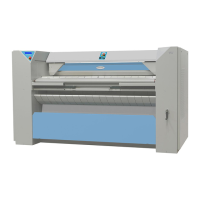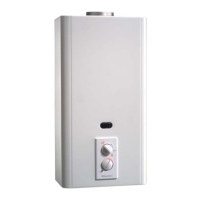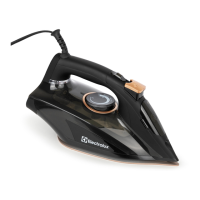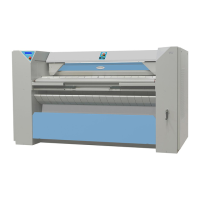0209
3
5
01106073
PageNotice Date
OPERATING
HANDBOOK
The machine temperature
drops
Check the sensor in the thermostat
regulation system.
Check the thermostat by measuring
the cylinder temperature with a
thermometer.
Check that the regulation shoe is in
contact with the cylinder.
The machine stops sud-
denly
Check the electric power supply.
Check the hand safety fl ap switches
S5 and S6.
Check the movement and ventilation
fans.
Check circuit breakers.
The folding system is
defective
Check that the photoelectric cell and
its refl ector are clean.
Check the folding arm limit switch.
Condensation given off by the linen
when still damp has affected the
operation of the photoelectric cell.
Check that the linen is perfectly dry
after being ironed.
Static electricity makes the folding diffi cult to achieve (machine with the folding
system only)
•
Synthetic textiles are used increasingly in laundry. The low rate of relative moisture on
output from drying allows high ironing speeds, which leads to production of harmful static
electricity when the linen is ironed in the machine.
• Use of softening and anti-static products attenuates this phenomenon.
• So, static electricity might cause important diffi culties at folding, especially when ironing
polyester/cotton. It si adviced to add a rincing anti-static liquid at the end of washing cycle
in order to reduce the formation of static elecricity when ironing.
Static electricity
•
Any friction generates static electricity. Remember the plastic ruler people rub over their
pullover to attract little bits of paper. With the same causes producing the same effects,
the linen being subjected to friction in the course of ironing, the rubbing of the linen
against the cylinder generates static electricity. If too much static electricity builds up,
friction has to be reduced, which can be done by removing the driving chain of the press-
cylinder to reduce the generation of static electricity.
5. Operating incidents
Encountered problem Cause of problem Solution

